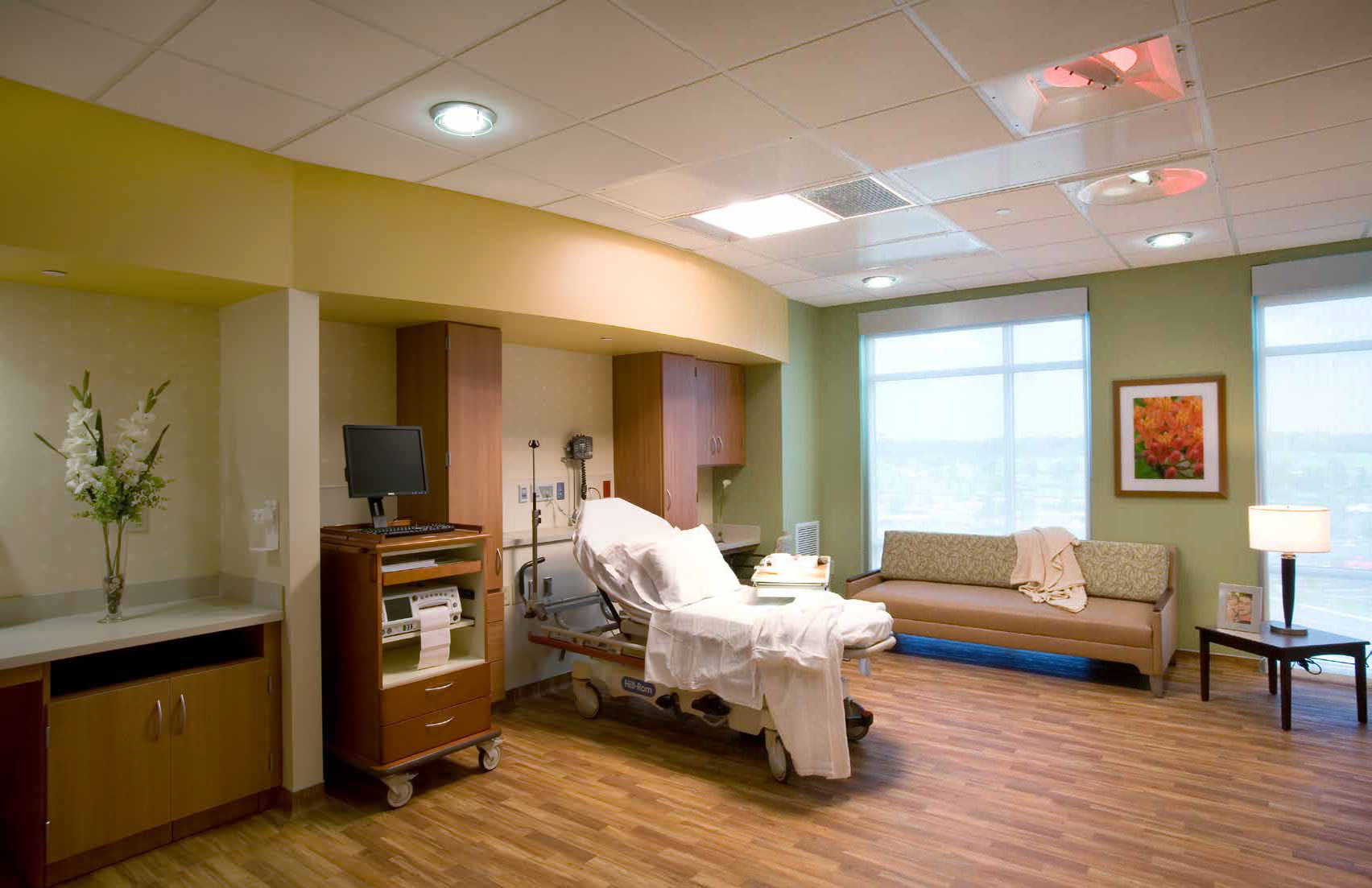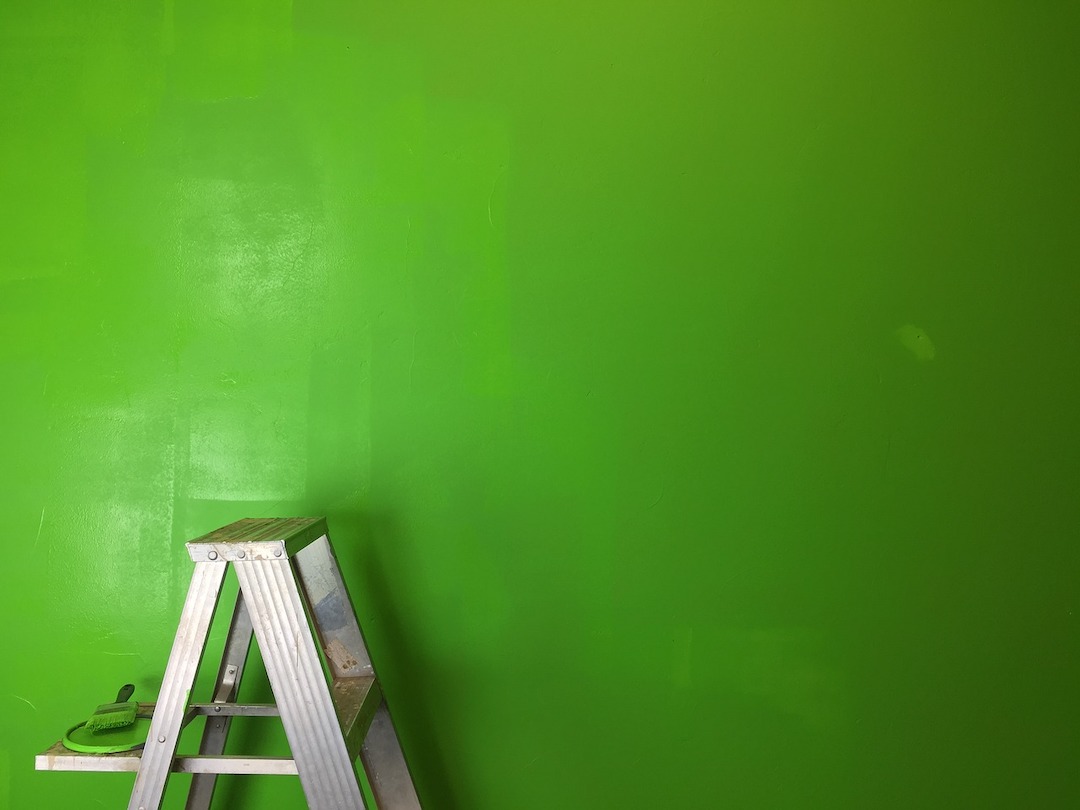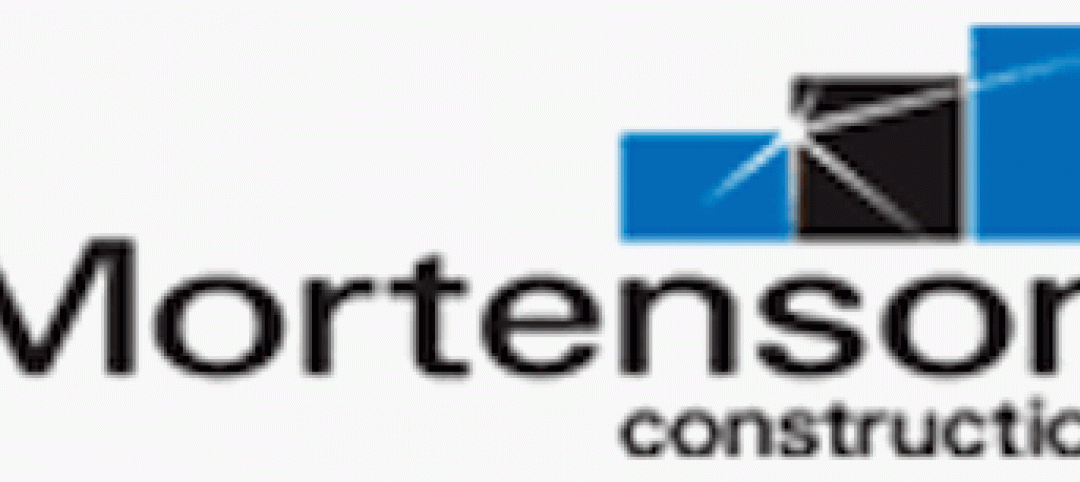In an environment where the chief task is to heal the sick and injured, color matters for both patients and healthcare personnel. In the report, “The Application of Color in Healthcare Settings,” by the Center for Health Design (CHD), healthcare design experts point to the influence of color in a variety of environments within healthcare facilities. From bright, open-air lobbies to neutral-toned operating rooms, there are many spaces where carefully selecting color can maximize comfort for occupants.
About the Report
“The Application of Color in Healthcare Settings” serves as a reference for architects and designers with regards to the application of color to healthcare spaces. Released October 2012 by The Center for Health Design, the report looks at studies of color in a variety of healthcare settings and offers insight on applicable color topics.
Authors:
Sheila J. Bosch, LEED AP, EDAC, Director of Research at Gresham, Smith, and Partners;
Rosalyn Cama, FASID, EDAC, President and Principal of CAMA Inc.
Eve Edelstein, Assoc. AIA, EDAC, F-AAA, President of Innovative Design Science
Jain Malkin, CID, AAHID, EDAC, President of Jain Malkin Inc.
1. Patient rooms: Make patients feel at home
There lacks a universally accepted consensus that colors can actually “help” patients heal, according to the study’s authors. Nevertheless, colors will be used to evoke certain emotions or moods. In a 1994 study of 68 subjects, all patients indicated a preference for lighter hues for their rooms—from the ceilings and floors to the furniture and linens.
Neutral palettes with soft natural tones work best for patient rooms and can have a hand in calming patients and their family members faced with the stress of having an ill loved one, according to the study. Avoid using palettes with strongly contrasting colors in these spaces, as they are known to cause strain for occupants.
Similar design considerations should be made where patients and their family members will spend time, such as waiting areas in emergency departments.
2. Employee spaces: Increase comfort for doctors and nurses
Professionals providing the care in healthcare environments are known for working long, stressful shifts, standing for hours on end. They need places of respite to rest and recharge. Brightly lit rooms with stronger color palettes can help those needing a quick break to stay fresh and lively. Darker, subtler break rooms with softer lighting are preferred by many workers looking to rest for longer periods of time.
3. Operating rooms: Neutralize the reds
In the operating room, surgeons and surgical nurses are focused on one color: blood red. While white is traditionally seen as the institutional color of choice, more often than not operating rooms will require the use of blue or green on the walls to contrast against the red. (There’s a reason hospital scrubs are commonly colored blue or green.) Viewing one color for a specific amount of time will produce an image of a complementary color afterward (called afterimages), so it is best to avoid stark white backgrounds, say the authors. With white walls, surgeons would constantly see blue-green spots when looking away from the operating table.
4. Accommodations: Consider patient conditions and age
Children’s hospitals are often colorful and bright in their design to help pediatric patients feel at home during their stay. In contrast, nursing homes are softer and more neutral. With elderly populations, vision is changing and deteriorating, so greater contrast is needed to help guide patients through their rooms. Consider saturated colors over pastels, which can blur together in patients with poorer eyesight.
Take into account the medical conditions of certain patients. One example in the CHD report is jaundice, or yellowing of the skin. Doctors and nurses treating those with the condition may find difficulty while assessing patients if yellow and blue walls or surfaces are dominant.
5. Color psychology: Apply colors to different spaces
While there is no concrete scientific evidence supporting its effects, the use of color psychology can help enhance the function of a space or room. Natural colors, such as green, blue, or brown, are seen as calming, and can signal the designation of a room. Red, while a stimulating color especially for creative types, is often avoided in facilities that treat neurological conditions or patients suffering from ailments such as post-traumatic stress disorder.
Related Stories
| Oct 24, 2012
Mortenson Construction sets up shop in Portland
Mortenson Construction, a U.S. builder headquartered in Minneapolis, Minn., has opened an office in Portland, Ore., the company announced.
| Jun 1, 2012
New BD+C University Course on Insulated Metal Panels available
By completing this course, you earn 1.0 HSW/SD AIA Learning Units.
| May 29, 2012
Reconstruction Awards Entry Information
Download a PDF of the Entry Information at the bottom of this page.
| May 24, 2012
2012 Reconstruction Awards Entry Form
Download a PDF of the Entry Form at the bottom of this page.
| May 3, 2012
Zero Energy Research Lab opens at North Texas
The living lab—the only one of its kind in Texas—is designed to test various technologies and systems in order to achieve a net-zero consumption of energy.
| Apr 25, 2012
Bubble skyscraper design aims to purify drinking water
The Freshwater Skyscraper will address the issue of increasing water scarcity through a process known as transpiration
| Oct 13, 2010
Test run on the HP Z200 SFF Good Value in a Small Package
Contributing Editor Jeff Yoders tests a new small-form factor, workstation-class desktop in Hewlett-Packard’s line that combines performance of its minitower machine with a smaller chassis and a lower price.
| Oct 13, 2010
Thought Leader
Sundra L. Ryce, President and CEO of SLR Contracting & Service Company, Buffalo, N.Y., talks about her firm’s success in new construction, renovation, CM, and design-build projects for the Navy, Air Force, and Buffalo Public Schools.
| Oct 11, 2010
MBMA Releases Fire Resistance Design Guide for metal building systems
The Metal Building Manufacturers Association (MBMA) announces the release of the 2010 Fire Resistance Design Guide for Metal Building Systems. The guide provides building owners, architects, engineers, specifiers, fire marshals, building code officials, contractors, product vendors, builders and metal building manufacturers information on how to effectively meet fire resistance requirements of a project with metal building systems.
| Sep 22, 2010
Satellier, Potential + Semac close investment deal
Satellier, a world leader in providing CAD and Building Information Modeling (BIM) outsourced services to the architecture, engineering and construction industry, announces a strategic minority investment from India-based top engineering firm Potential + Semac, ushering in the next evolution of the global architecture support industry.













